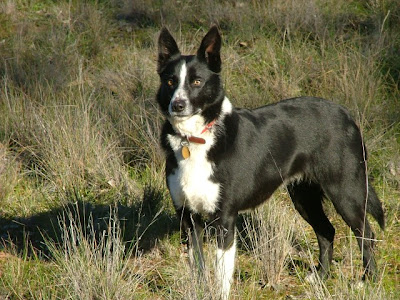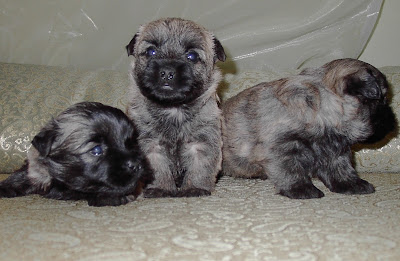Monday, June 27, 2011
Stud Dogs - How to Find a Stud Dog
Making the decision to let your bitch have a litter of puppies is quite complex and requires a huge amount of effort on your part to find the perfect stud dog as this is one of the most important aspects of dog breeding.
Once you have considered the expense involved and upheaval associated with dog breeding and have come to the decision that it is the right choice for you, you can then begin your search for the stud dog that will be the perfect sire for your litter of pups. With the advent of the Internet, finding a dog is much easier now than it used to be as many people advertise the services of their stud dogs online.
 Many owners may look at show dogs to sire a litter of puppies; they may seek stud dogs with a champion lineage and a long line of awards. However, this can prove to be extremely expensive and for many owners is just not affordable. Making use of a dog directory is a good way to find a selection of stud dogs that would be perfect for your bitch, although you must still carry out certain checks to ensure suitability.
Many owners may look at show dogs to sire a litter of puppies; they may seek stud dogs with a champion lineage and a long line of awards. However, this can prove to be extremely expensive and for many owners is just not affordable. Making use of a dog directory is a good way to find a selection of stud dogs that would be perfect for your bitch, although you must still carry out certain checks to ensure suitability.
Suitability checks
Unfortunately, some dog owners are only interested in breeding to make a huge profit and these owners should be avoided. This type of owner could take little interest in the health and welfare of their dog, which can have an adverse effect on the litter of puppies.
Some breeds have a disposition to certain hereditary weaknesses and care should be taken that the stud dog and indeed the bitch have been thoroughly health checked to avoid these conditions being passed to the puppies. For instance, Golden Retrievers are known to be genetically prone to heart disease, hip dysplasia, cataracts and eye abnormalities plus skin conditions and epilepsy. This doesn't mean that your Golden Retriever will have these conditions but health screening of dogs will help to avoid the chance of developing these conditions. Many dog breeds have genetic conditions that they should be health screened for, as responsible breeding is the only way to have a litter of healthy, desirable pups.
Arranging to meet
When you contact the owner of a dog through a directory it is advisable to arrange a meeting so the dogs become familiar with each other and so that you can ascertain whether the owner of the dog has had health checks carried out. Stud dogs that conform to the breed standard may be preferable as any deviation from the breed can be classed as 'undesirable' by many breeders of show dogs.
When you visit the dog's owner make sure that the dog is kept in good condition and appears healthy with a happy, laid back nature. If there are other dogs present check that they are well cared for too as this will give an indication of whether the owner has a genuine interest in the welfare of their dogs, and not just looking to make money. A stud dog directory will make the search for a perfect sire much easier but you should take care that the dog is a suitable candidate for breeding. Viewing a selection of stud dogs will help you make the right choice.
The author has owned dogs all her life and has over 15 years experience of dog breeding and stud dogs, having cared for more than 30 dogs. Vivien is one of the main authors on Dream Dogs, a site dedicated to news and articles for dog lovers with an emphasis on stud dogs, breeding and raising healthy puppies.
Article Source: http://EzineArticles.com/?expert=Vivien_Richardson
Once you have considered the expense involved and upheaval associated with dog breeding and have come to the decision that it is the right choice for you, you can then begin your search for the stud dog that will be the perfect sire for your litter of pups. With the advent of the Internet, finding a dog is much easier now than it used to be as many people advertise the services of their stud dogs online.
 Many owners may look at show dogs to sire a litter of puppies; they may seek stud dogs with a champion lineage and a long line of awards. However, this can prove to be extremely expensive and for many owners is just not affordable. Making use of a dog directory is a good way to find a selection of stud dogs that would be perfect for your bitch, although you must still carry out certain checks to ensure suitability.
Many owners may look at show dogs to sire a litter of puppies; they may seek stud dogs with a champion lineage and a long line of awards. However, this can prove to be extremely expensive and for many owners is just not affordable. Making use of a dog directory is a good way to find a selection of stud dogs that would be perfect for your bitch, although you must still carry out certain checks to ensure suitability.Suitability checks
Unfortunately, some dog owners are only interested in breeding to make a huge profit and these owners should be avoided. This type of owner could take little interest in the health and welfare of their dog, which can have an adverse effect on the litter of puppies.
Some breeds have a disposition to certain hereditary weaknesses and care should be taken that the stud dog and indeed the bitch have been thoroughly health checked to avoid these conditions being passed to the puppies. For instance, Golden Retrievers are known to be genetically prone to heart disease, hip dysplasia, cataracts and eye abnormalities plus skin conditions and epilepsy. This doesn't mean that your Golden Retriever will have these conditions but health screening of dogs will help to avoid the chance of developing these conditions. Many dog breeds have genetic conditions that they should be health screened for, as responsible breeding is the only way to have a litter of healthy, desirable pups.
Arranging to meet
When you contact the owner of a dog through a directory it is advisable to arrange a meeting so the dogs become familiar with each other and so that you can ascertain whether the owner of the dog has had health checks carried out. Stud dogs that conform to the breed standard may be preferable as any deviation from the breed can be classed as 'undesirable' by many breeders of show dogs.
When you visit the dog's owner make sure that the dog is kept in good condition and appears healthy with a happy, laid back nature. If there are other dogs present check that they are well cared for too as this will give an indication of whether the owner has a genuine interest in the welfare of their dogs, and not just looking to make money. A stud dog directory will make the search for a perfect sire much easier but you should take care that the dog is a suitable candidate for breeding. Viewing a selection of stud dogs will help you make the right choice.
The author has owned dogs all her life and has over 15 years experience of dog breeding and stud dogs, having cared for more than 30 dogs. Vivien is one of the main authors on Dream Dogs, a site dedicated to news and articles for dog lovers with an emphasis on stud dogs, breeding and raising healthy puppies.
Article Source: http://EzineArticles.com/?expert=Vivien_Richardson














































